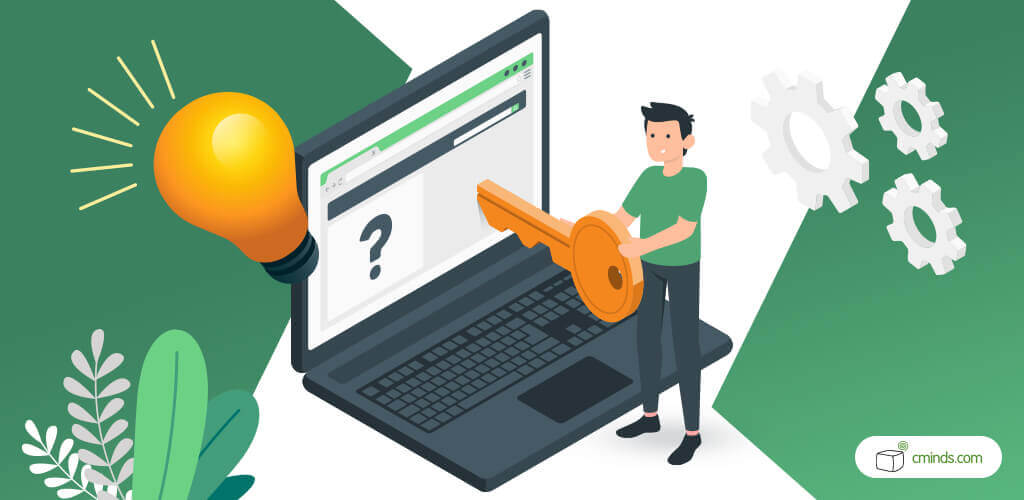Website accessibility is one of the biggest trends for 2021. Here’s how you can make your site more accessible and improve website accessibility for all.

What is Web Accessibility?
The internet has completely changed how we live our lives. The way we socialize, work, shop, and even play has been revolutionized by the web.
Because of this, the web should be open to all – no matter your background, language, location, or physical and mental ability.
April 2025 Offer – For a Limited Time Only:
Get WordPress 99+ Plugins Mega Bundle for 15% off! Don’t miss out!
The web accessibility movement champions this idea, with focus on making the internet accessible to people with disabilities. This includes building accessibility into technologies and modifying aesthetic design.
The World Wide Web Consortium (W3C) explains:
“The impact of disability is radically changed on the Web because the Web removes barriers to communication and interaction that many people face in the physical world. However, when web sites, applications, technologies, or tools are badly designed, they can create barriers that exclude people from using the Web.”
Web accessibility applies to all kinds of disabilities and impairments, including but not limited to:
- Physical
- Visual
- Speech
- Auditory
- Neurological
- Cognitive
- H1 is the title of your book. It should be used only once.
- H2 are chapters. Use them to make it clear what each section of the webpage is about.
- H3 are subsections of each chapter. Use them to break down content into easily digestible chunks.
- Thinking carefully about the colors you use. Color vision deficiency (sometimes known as color blindness) affects around 300 million people. The most common form is red-green color deficiency. Using only these colors will make your website inaccessible to those who have it.
- Keeping contrast sensitivity in mind. A number of visual impairments can lead to low color contrast sensitivity. When designing webpages, make sure to keep high contrast between foreground and background.
- Pick clear fonts in bigger sizes and contrasting colors. To make content easier to read, avoid choosing thin fonts and make sure the size is readable. Keep in mind the optimal color choices too: black text on white backgrounds, yellow text on black backgrounds, and yellow text on blue backgrounds.
4. Provide Content in Multiple Mediums

It’s great to have a mixture of audio, video, and static images but make sure to provide text alternatives to improve web accessibility.
Simple text transcripts of audio and video content are a great feature to include. They’re relatively quick and simple to create and make your website more accessible.
Alongside this, you should also provide proper alt text for images. Alt text is a description of the appearance and function of an image. This, again, helps screen readers give a clearer picture of what a webpage is about. It’s particularly important for infographics.
Alt text is also handy because it can displayed if an image file can’t be loaded. It also provides additional information to search engine crawlers, which will help your content to be indexed better – boosting your SEO too!
5. Use Descriptive Links and URLs

Lastly, you should aim to use unique, descriptive names for links and URLs.
When linking to another page, anchor the link to text that accurately describes where following the link will take the user. Using “click here” or “read more” is considered bad practice for accessibility. For example, if you want to direct users to your main product catalogue:
- Avoid saying: “Click here to see our products.”
- Instead, say: “To browse our full collection, visit the Cminds WordPress plugin catalogue.”
The same applies to URLs. All URLs should accurately describe what visitors will find on the particular webpage. They should ideally be more than one word for improved readability, but remain relatively simple. Moz has a great guide on URLs.
Conclusion
Even if you didn’t initially build your website for optimized accessibility, there are steps you can take to help make your website more accessible.
If you’re just beginning to build your website, embedding accessibility into your initial process is a great thing to do for everyone. Accessibility is about making the web as inclusive as possible.
The tips listed here are not the only things you can do, but they’re a great starting point to improve website accessibility for everyone. We love the world wide web, and we think everyone should have equal access.
If you want help and support improving your website, we offer hourly support for WordPress. Whether you want to make your site more accessible, or carry out a customization project, our professional developers can help!
As the movement grows, accessibility is becoming a bigger part of web design. We believe it’s something that all website owners should take into consideration when building or adding to a website.
So, how can you make your website more accessible?
5 Simple Ways to Make Your Website More Accessible
All of the following tips follow accessibility best practice, and are fairly straightforward to implement. So, without further ado, here are five ways to improve website accessibility.
1. Work With a CMS That Supports Accessibility

The first thing you can do to make your website more accessible is pick a content management system that supports accessibility.
WordPress and Magento are both great options. Both content management giants support and champion accessibility.
WordPress make clear their commitment to the accessibility movement, stating that they follow all web design standards and best practices when building new features and themes. They also encourage users to contact them if they run into any accessibility problems, and promise to fix issues if possible and appropriate.
Magento even go one step further, providing merchants and developers with an guide to help improve website accessibility.
Choosing a CMS that supports accessibility is a big step to make your website accessible. It creates a strong foundation that you can then build upon with the next steps in this guide.
2. Structure Your Content Correctly

Screen readers are often used by people with visual impairments to browse the web. Screen reader software and hardware provides text-to-speech or braille feedback of a webpage. It’s clever, life changing technology, but you can help to make it’s job easier and improve website accessibility. It’s as simple as using headings correctly.
Using headings tags (<h1>, <h2>, <h3>) in the correct way helps screen readers to understand your content.
When structing your content, think of heading tags in terms of books.
You should avoid skipping header levels or using them out of order. Doing this can cause issues for screen readers. For example, if you use <h1> and then <h3> without <h2> in the middle, screen readers may think there is missing content on the page.
Using headings correctly is a small but meaningful step to make your website more accessible. There’s really no reason not to.
3. Improve Website Accessibility Through Design

Embed accessibility into the creative process. This can include:





